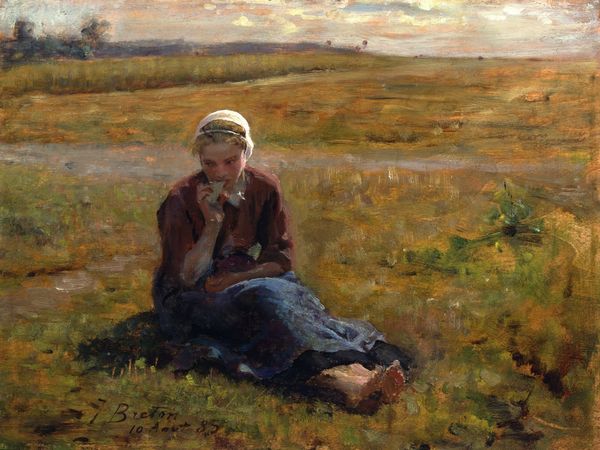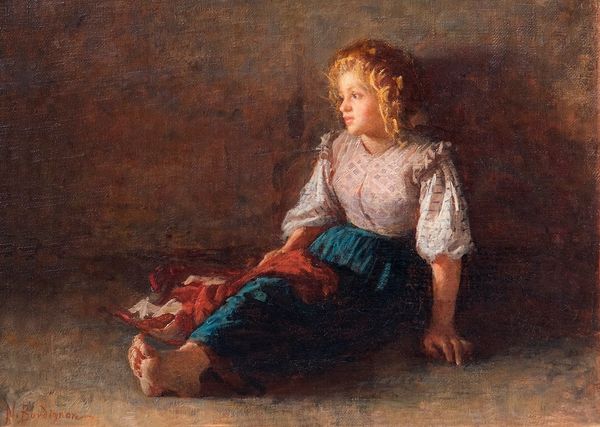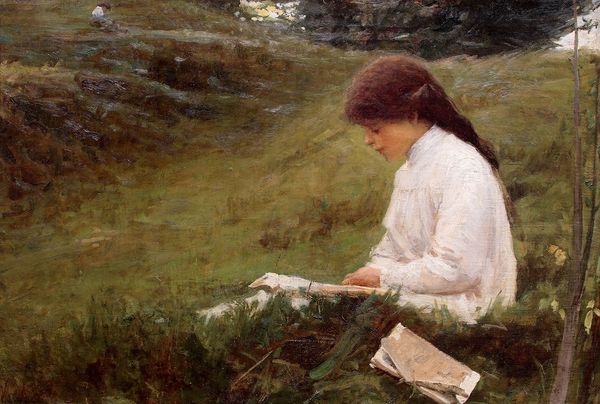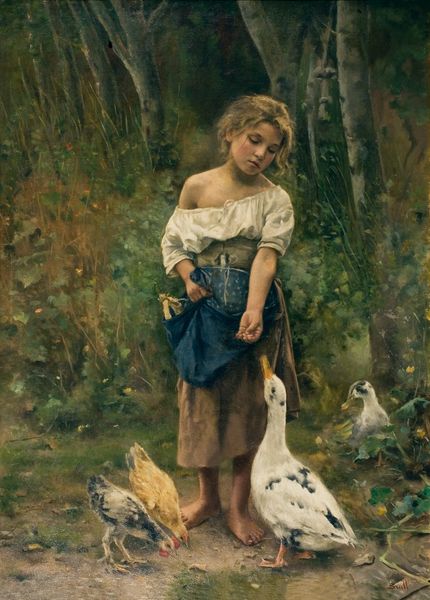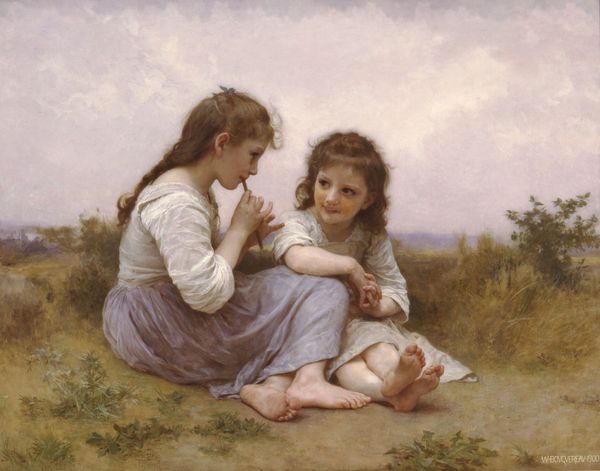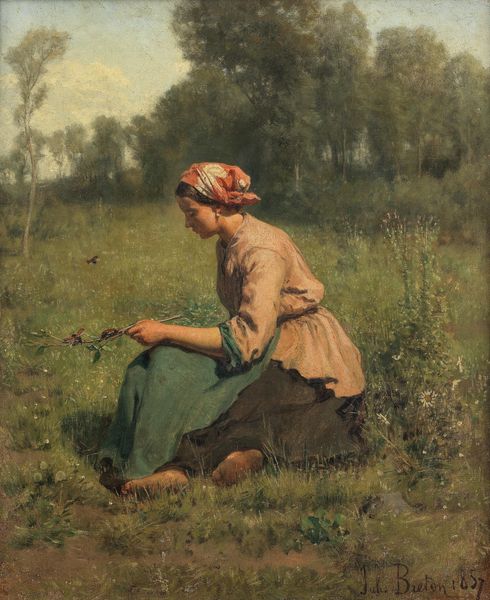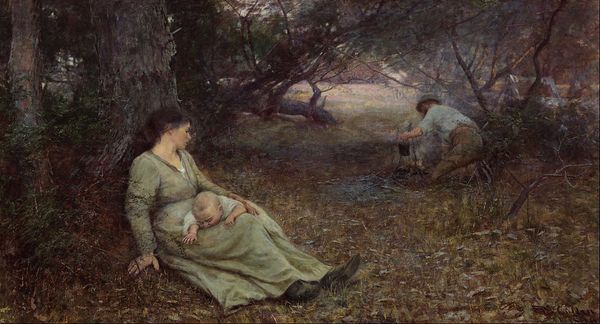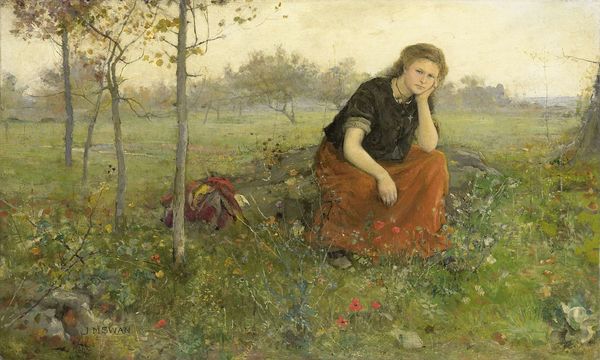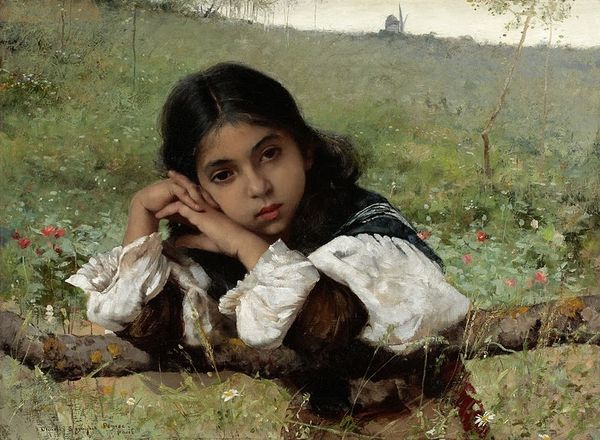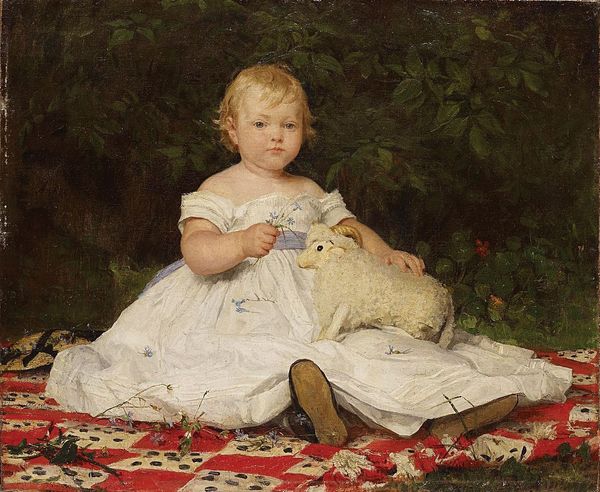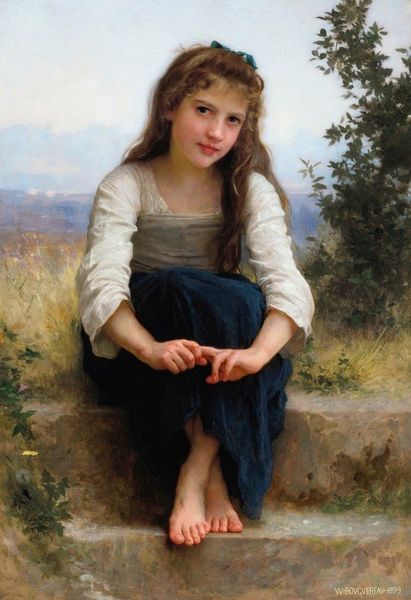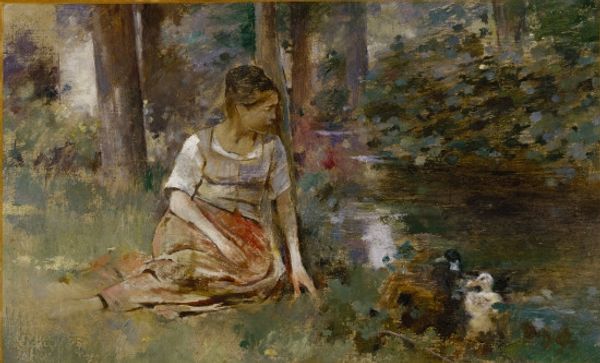
Dimensions: 42 x 62 cm
Copyright: Public domain
Editor: We're looking at "Alone in the fields" by Noè Bordignon, an oil painting from 1900. What strikes me is its quiet intimacy – a young woman seemingly lost in thought, immersed in the landscape. What do you see in this piece? Curator: It's interesting you highlight the intimacy. I'm immediately drawn to the social context implied. Notice the plein-air style – painting outdoors became increasingly popular, reflecting a shift in artistic values, and changing class structures. It offered new representations of rural life to an urbanizing population. Does her placement on the edge of the field suggest a literal or metaphorical boundary? Editor: That’s a good question. It almost feels like she's caught between the rural world and something beyond it, maybe urban life or some different prospect. I hadn’t thought about that tension. Curator: And how does the artist choose to depict her? She isn’t idealized. Her bare feet and simple clothes portray working class status, contrasting starkly with traditional depictions of female figures in art. Could the 'aloneness' in the title reflect broader feelings of marginalization or independence? Editor: So, the painting is more than just a peaceful scene. It also carries a social narrative about changing times and the place of women. I see it. Curator: Exactly. And think about how the Romantics had been exploring concepts of individual consciousness against the grandeur of nature decades earlier. The artist creates tension through social reality painted within an established style. Editor: This has totally changed my perspective. What looked like a simple portrait is actually loaded with commentary about society at the time! Curator: Absolutely. This piece reveals so much if we consider its place within art history. I think this gives both a wider appreciation.
Comments
No comments
Be the first to comment and join the conversation on the ultimate creative platform.
